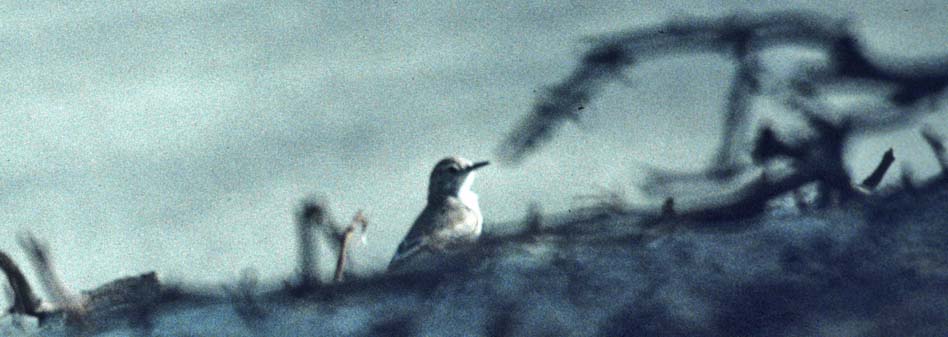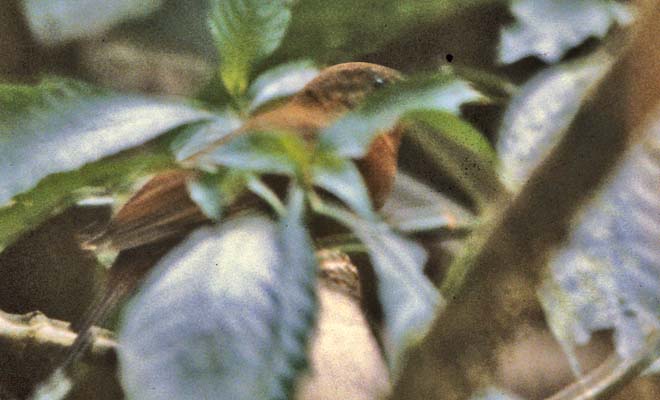
a web page by Don Roberson |
FURNARIDS Furnariidae |
|
The fact that miners and leaftossers are "basal" to the rest of the family means that their ancestors evolved earliest into a separate lineage, making them more distinctly different than woodcreepers are to the rest of the ovenbirds. Since woodcreepers are so distinctive and easily recognized, and have been thought of as a family for so long, it is now convenient to think of the Furnarids as three subfamilies. I approach them that way here, setting up three separate pages to break-up this huge family. It also makes it easy to elevate these groups to family level if that approach were to be preferred:
Traditionally, the Ovenbirds [Furnariidae] were considered a separate family from the Woodcreepers [Dendrocolaptidae]. This stardard approach was carried over into the Handbook of the Birds of the World project; Remsen (2003) and Marantz et al. (2003). Yet as early as Feduccia (1973) it was proposed that the woodcreepers were embedded within the Furnariidae, thus making that family paraphyletic. Sibley & Ahlquist (1990) merged woodcreepers into the Furnariidae, and both the AOU and SACC have since followed suit. However, an alternative classification would be to recognize all three major groups as families, i.e., Scleruridae, Furnariidae, and Dendrocolaptidae (see Moyle et al. 2009). |
The 17 species in the subfamily Sclerurinae [or family Scleruridae, if it comes to that] are assigned to just two genera: the Geositta miners (11 species) and the Sclerurus leaftossers (6 species). As explained by Remsen (2003), the miners are the first genera in a 'traditional' arrangement of furnarids. The miners are "the only members of the family with an emarginate, or notched, tail, and some miners have the most conspicuous tail patterns amongst the Furnariidae. All are short-tailed terrestrial birds of open habitats, with flight abilities much greater than those of most other ovenbirds. Many or perhaps all miners also have flight songs, in contrast to other genera ... The bills of Geositta miners vary from short and straight to long, thick and curved; this variation is presumably associated with increased digging and probing foraging manoeuvres by the the long, more curve-billed species;" Remsen (2003). A short-billed miner is Coastal Miner, which forages in arid lowland scrub in sandy deserts near the coasts of Peru and northern Chile (below). In a "traditional" arrangement, the next genera are the Cinclodes (13 species) which are also terrestrial foragers, and some occur along the Peruvian-Chilean sea shores, not far from the habitat of Coastal Miner. However, genetic evidence has shown that Cinclodes is not closely related to Geositta. |
 |
The only other group that is closely related to miners, and which are basal to all other furnarids, are the Sclerurus leaftossers. Ironically, they were often placed at the very end of a "traditional" furnarid arrangement, as far away from the miners as they could be placed. All six leaftossers are mostly terrestrial birds of humid lowland or lower montane tropical and subtropical forests. Remsen (2003) explains that the "stiffened feather shafts of the tail of the leaftossers are unusual among ground-foraging birds. Leaftossers have a conspicuously long, thin, rather straight bill and a broad tail. Using the bill, they flick aside leaf letter, rather than 'tossing' it." They will flush up into the trees when disturbed (e.g., photo above). Interestingly, leaftossers nest in tunnels they dig in soft banks in the forest. |
Photos: The half-hidden Tawny-throated Leaftosser Sclerurus mexicanus was in low montane forest on the trail to El Triunfo, Chiapas, Mexico, on 7 April 1995. The Coastal Miner Geositta peruviana was along the Iza Highway, Peru, on 12 June 1987. Photos © Don Roberson; all rights reserved. Bibliographic note: Family Book:
Now, of course, the lengthy family text, species accounts, and wonderful photos in the Handbook of the Birds of the World project serve as a fine introduction. Miners & Leaftossers plus Ovenbirds are in Remsen (2003); Woodcreepers in Marantz et al. (2003). Literature cited:
|
 Furnarids
(sometimes called "Ovenbirds") are a huge family of New World
passerines that range through every habitat in the Neotropics.
Furnarids are even a larger family now than when I first posted a
Furnariidae page in 1999. There were 235 species in the family. Splits
and a few new species have added species, but what has changed must
dramatically, enlarging the family by more than 20%, is what groups are
included within the Furnariidae. Genetic data (Chesser 2004,
Fjeldså et al. 2005, Irestedt et al. 2006, 2009, Moyle et al.
2009) strongly support this position, with the genera Geositta [miners] and Sclerurus [leaftossers] being basal to all other ovenbirds plus woodcreepers. One of those leaftossers is Tawny-throated Leaftosser (left), which, unfortunately, is partly hidden between a leaf in this shot from the humid Chiapas submontane forest.
Furnarids
(sometimes called "Ovenbirds") are a huge family of New World
passerines that range through every habitat in the Neotropics.
Furnarids are even a larger family now than when I first posted a
Furnariidae page in 1999. There were 235 species in the family. Splits
and a few new species have added species, but what has changed must
dramatically, enlarging the family by more than 20%, is what groups are
included within the Furnariidae. Genetic data (Chesser 2004,
Fjeldså et al. 2005, Irestedt et al. 2006, 2009, Moyle et al.
2009) strongly support this position, with the genera Geositta [miners] and Sclerurus [leaftossers] being basal to all other ovenbirds plus woodcreepers. One of those leaftossers is Tawny-throated Leaftosser (left), which, unfortunately, is partly hidden between a leaf in this shot from the humid Chiapas submontane forest. 